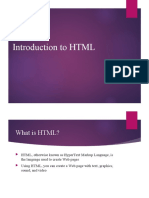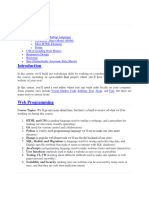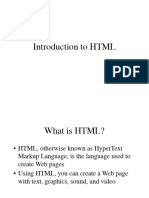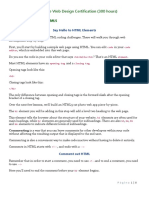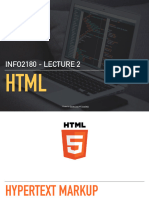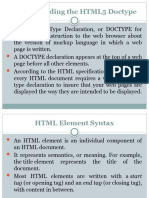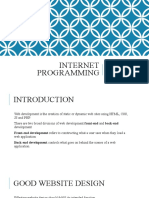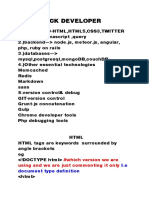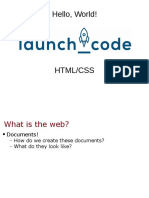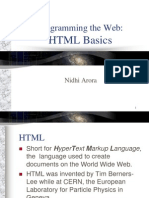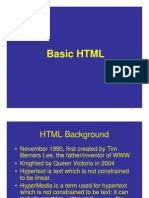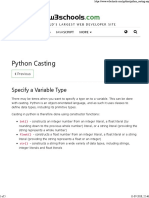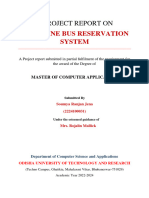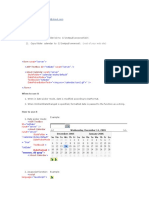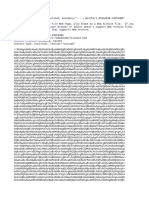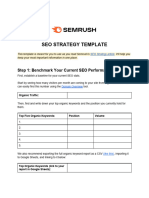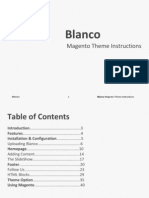0% found this document useful (0 votes)
10 views6 pagesLearning HTML
The document provides a comprehensive guide on HTML, CSS, and Python, detailing the structure and usage of various HTML elements such as headings, paragraphs, images, links, lists, forms, and attributes. It emphasizes the importance of proper nesting, indentation, and the use of CSS for styling HTML documents. Additionally, it covers metadata, document structure, and best practices for creating accessible web content.
Uploaded by
agrimathakurcontentCopyright
© © All Rights Reserved
We take content rights seriously. If you suspect this is your content, claim it here.
Available Formats
Download as DOCX, PDF, TXT or read online on Scribd
0% found this document useful (0 votes)
10 views6 pagesLearning HTML
The document provides a comprehensive guide on HTML, CSS, and Python, detailing the structure and usage of various HTML elements such as headings, paragraphs, images, links, lists, forms, and attributes. It emphasizes the importance of proper nesting, indentation, and the use of CSS for styling HTML documents. Additionally, it covers metadata, document structure, and best practices for creating accessible web content.
Uploaded by
agrimathakurcontentCopyright
© © All Rights Reserved
We take content rights seriously. If you suspect this is your content, claim it here.
Available Formats
Download as DOCX, PDF, TXT or read online on Scribd
/ 6







